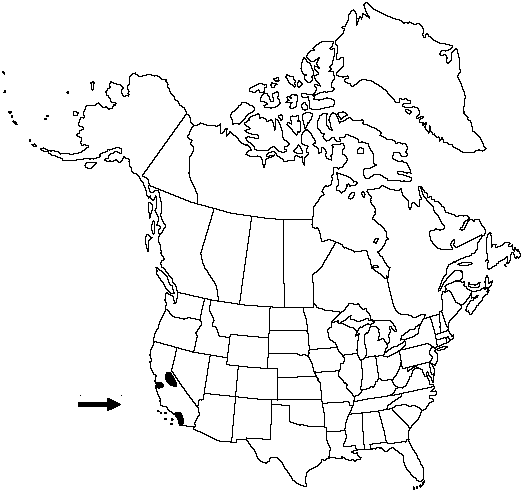Ophioglossum californicum
Ber. Deutsch. Bot. Ges. 1: 355. 1883.
Roots to 16 per plant, pale-brown, 0.5-1 mm diam., producing proliferations. Stem upright, to 1.6 cm, 5mm diam., commonly 2 leaves per stem. Trophophore stalk 0-1.8cm, to 2.5 times length of trophophore blade. Trophophore blade erect to spreading, commonly ± folded when alive, green, dull, without pale central band when dried, to 4.3 × 1 cm (rarely 0.4 × 0.3 mm), herbaceous, thick, gradually tapering to base, apex attenuate; venation complex-reticulate, with numerous parallel narrow areoles, each with 1-several included veinlets. Sporophores arising near ground level, 1-2.5 times length of trophophore; sporangial clusters 8-15 × 1-3 mm, with 8-15 pairs of sporangia, apiculum 0.3-1 mm.
Habitat: Open grassy fields and prairies
Elevation: 50-300 m
Distribution

Calif., Mexico.
Discussion
Ophioglossum californicum differs from the Old World species O. lusitanicum in that O. lusitanicum has a narrowly linear to linear-oblanceolate trophophore that is 1/4 to 1/2 as wide as long; O. lusitanicum also has a much simpler venation and usually lacks an apiculum.
Selected References
None.